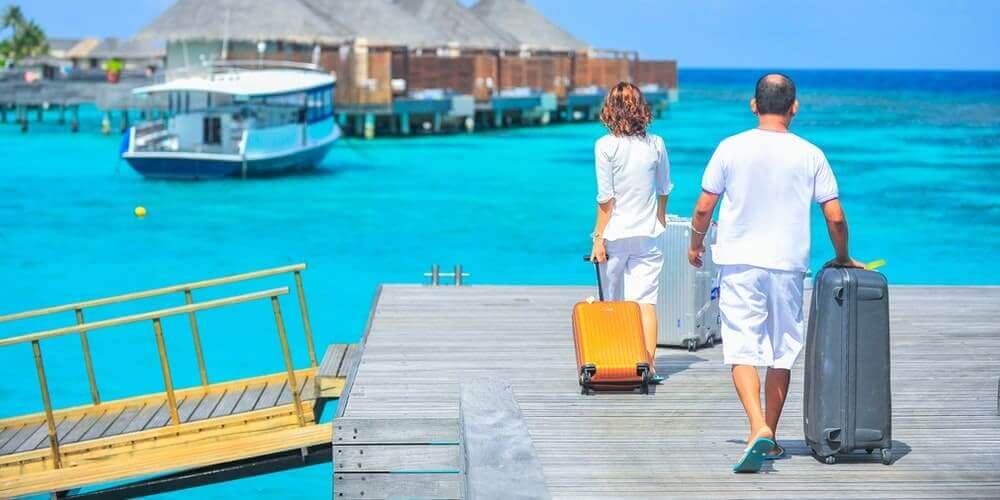Tourism has developed into a main sector of the world economy and has added a major workforce worldwide. Tourism Economics is very important to study. It has been constructing an innovative and important impact on the global economic scenario. Tourism has been recognized as the main export industry in the world. The multidimensional face of this industry marks it as a catalyst to economic growth and supports steady regional growth. It is a little capital, labour demanding industry with economy multiplier and gives chance to earn foreign exchange at less social cost.

Tourism industry acts as an influential instrument of both social and economic transformations. It encourages jobs and investment, alters arrangement of an economy, important impact to foreign exchange earnings and conserving positive balance of payment. The currency paid by the tourist in a nation is rolled over numerous spells in the process; the entire income grossed out from tourism is a number of times more than real expenditure. The multiplier effect of tourism earnings is completely predictable as scattering to minor and tertiary sectors of an economy. Tourism contains cultural, educational, economic, social and political importance.
1. Tourism Demand
People have many reasons or purposes to travel or engage themselves in tourism process, there are large number of travellers and explorers who are participating in tourism activities for diverse reasons. Apparently, each reason arises with a different kind of demand. One of the major demands in tourism is for accommodation. Whatever is the reason to travel a tourist needs a place to stay at different places where he/she is visiting.
Some of the everyday reasons/purpose for travelling to a new place from home are:
• To relaxation, refreshment and breaks
• To visit families and friends
• For trade and professional meetings
• For medical check-ups or treatment
• For religious purpose and other pilgrimages
• Other additional private reasons
The demand for tourism can be explained in different methods, subject to the economic, geographic, political and psychological. “The geographic perspective defines tourism demand as the total number of persons who travel or wish to travel, and use tourist facilities and services at places away from their places of work or residence”.
Tourism demand is controlled and persuaded by numerous outside causes, in specific market forces and economic dynamics, running to the creation of physical and financial movements that have resilient socio-cultural, environmental and economic influences.
2. Elasticity of Tourism
“Alfred Marshall presented the concept of elasticity in the year 1890 to measure the magnitude of percentage change in the quantity demanded of a commodity to a certain percentage change in its price or the income of the buyer or in the prices of related goods. In this section we look at the sensitivity of demand for a product to a change in the product’s own price. Since Price Elasticity of Demand is predominantly used in economic analysis it is alternatively referred to as Elasticity of Demand”.
Elasticity of Demand means to the level of reaction of amount wanted to the variations in the factors of demand.
“Demand elasticity is typically measured in absolute terms, meaning its sign is ignored. If demand elasticity is greater than 1, it is called elastic, meaning it reacts proportionately higher to changes in other economic factors. Inelastic demand means that the demand elasticity is less than 1, and the demand reacts proportionately lower to changes in another variable. When a change in demand is proportionately the same as that for another variable, the demand elasticity is called unit elastic.
Tourism demand and its elasticity depends on several issues such as income, population, flow of tourists, the accommodation facilities, accessibility, price etc. The elasticity calculates the alteration in tourism demand due to price or income. Income elasticity and price are very helpful to contemplate as compared to pricing, exchange and taxation. A large array of products are present in tourism and it is hard to obtain appropriate measures of prices to estimate the price elasticity of demand. Whenever we are considering the prices of tourism, we have to atleast contemplate two prices such as the expense of transport to reach the destination and the price of staying at the destination. According to some studies, the price elasticity of demand in case of global tourism is influenced by tourist’s place of residence or origination, tourist destination, and the purpose of travel which can be both elastic & inelastic. If, you talk about tourists, then also the leisure travel is more sensitive to price change as opposed to business travel. And, the leisure travel has more flexibility to cancel their trips in wake of price rise than the business travel.
The income elasticity of tourism demand greatly affects the tourism activity as compared to price elasticity. In the case of income elasticity, people are sensitive to change in their income level as tourism is considered as an extravagance activity. And, there is no compulsion to spend money in case of crisis situation. Though, people are always fond of traveling and this has yielded the growth of tourism activity. And, it has been seen, that if the income level increases in the source countries or regions, then the demand for tourism also increases in the country or region of destinations. Hence, it’s vital for the policy makers and the planners to understand the demand and the elasticity associated with it.
3. Tourism Supply
Tourism Management is a complicated segment containing an extensive variety of economic actions. Tourism supply is unique of the processes. It is extremely dependable on the artificial or man-made, operating, natural, as well as the controlling factors engaged in making the tourism product. The supply components are geographically controlled to a permanent place thus, the stake holding companies wants to offer service and products by adding costs and foreseeing marketing of their single products. It effects a whole tour right from beginning the tour till the end it graciously and pleasingly.
The tourism Supply of a business is originated by calculating the price of tourism products offered by the tourism business to the visitors. It includes various components like transport, food, accommodation services and other trade sales. In simple terms Tourism Supply can be defined as the different services offered to the tourists by the stakeholders in the tourism industry such as accommodation, food, transport, Guide services, Insurance etc.
Properties of Tourism Supply
• Tourism supply or services are fragile in nature (cannot be warehoused for a longer time frame like in case of products).
• It can only be examined or experienced only after purchasing it.
• There is a need to travel from one place to another in order to consumption of various services.
• Most of the time the services are geographically stationary at far or different destinations.
Components of tourism supply
a.Attractions:
It consists of various types of attractions such as Natural Attractions (such as water bodies, landscapes, rocks Caves, canyons) Man-Made Attractions (that is Temples, mosques, churches, architecture, Theme parks, towers, bridges, and monuments) and Cultural Attractions (i.e. local folk core, music, dance, Historical sites, monuments, local arts and crafts).
b. Transportation:
It includes Roadways, Railways, Waterways and airways.
c. Intermediaries (comprises Distribution Channels):
Travel Agents and Tour Operators.
d. Destination:
The places a tourist or visitor visits is destination. Itconsists of Accommodation, Restaurants and otherTourist Facilities such as shopping centres, casinos, Pubs and entertainment parks.
e. Activities:
This comprise of different activities that the tourists are interested to be part of like Adventure Sports (such as Mountain biking, bungee jumping, rafting, and other similar activities),Leisure activities (such as dining near water body Basking on beaches, swimming) Business Activities (such as business meetings, promotions and Attending seminars) andHealth Activities (such as undergoing naturopathy, exercising and similar such activities Attending Yoga sessions).
4. Balance of Payments
The BoP, are also recognised Balance of payments as balance of international payments and of a country is the documentation of all financial transactions amongst the rest of the world in a specific period the residents of the country (over a half of a year or more generally over a year). The transactions are completed by parties, government bodies and firms. Thus, the balance of payments comprises of all outside visible and invisible transactions of a country. It is significant subject to be considered, particularly in international monetary managing field, for a limited reason.
First, the balance of payments offers complete information about the supply and demand of a nation’s money.
For instance, if India imports extra than it exports, then this states that the supply of rupees is probable to surpass the demand in the overseas exchanging marketplace, one can therefore suppose that the Indian rupee would be in burden to decline in contradiction of other exchanges. On the other way, if Indian exports are higher than it imports, rupee would possibly rise.
Secondly, a nation’s balance-of-payment statistics may indicate it’s prospective as a trade associate for the other nations of the earth. If suppose a country is struggling with a key BoP trouble, they are not able to multiply imports from the external countries. In this case, the country might be interested to execute methods to confine its imports and depress capital outflows with the aim to recover the BoP position.
In an another case, a country suffering a important BoP excessive would stand more probable to increase providing promotion chances for overseas firms, and less possible to levy foreign exchange limits.
Thirdly, BoP statistics can be cast-off to assess the functioning of the nation in global economic contest. Assume a country is undergoing trade shortages each financial year. This trade statistic might then indicate that the nation’s domestic trades lack global attractiveness. To understand balance-of-payments statistics correctly, it is compulsory to realise in what way the BoP account is created. These transactions contain payments for nation’s imports and exports of financial capital, financial transfers, goods and services. It is made in a particular exchange, normally the domestic money for the nation. Sources of funds for a country, like exports and earnings of investments and loans are documented as progressive or extra articles. Usages of funds, like for imports and invest in overseas nations, should be documented as bad or shortage objects.
Once entire constituents of the Balance of payments accounts are integrated, they need amount to zero without complete shortage. For instance, if a nation is importing more as compared to its exports, its trade equilibrium will be in shortage, then the deficit must to be balanced in by new means such as by resources grossed from its overseas ventures, by management of low currency assets or by obtaining loans from additional nations.
Although the complete Balance of payments accounts will continuously equilibrium after all kinds of payments are comprised, differences are likely to be on singular components of the Balance of payments, such as the present account and capital account ignoring the central bank’s reserve account. Differences in the final amount can lead to deficit, though can be converted gradually indebted.
Balance of payments frequently signifies to the amount: a nation’s BoP is said to be in extra (consistently, the BoP is positive) by a precise sum if sources of capitals (such as export products sold and bonds sold) surpass usages of reserves (such as reimbursing for smuggled commodities and reimbursing for overseas bonds bought) by that sum. Here, it is said to be a BoP shortage (or the equilibrium of payments is called negative) if the earlier are minus than the future. A BoP surplus (or deficit) is convoyed by an addition (or dissimulation) of forex capitals by the central bank.
In case of the stable give-and-take system, central bank adjusts those currents by purchasing up some net inflow of funds into the nation or by delivering foreign money funds to the foreign money market to balance any global drainage of funds, therefore avoiding the capitals currents from troubling the exchange rate amongst the nation’s currency and other cash. Then net difference each financial year in the central bank’s forex stocks is occasionally called the BoP extra or shortage. Substitutes to a stationary exchange rate system comprise a well care taken drift where some variations of exchange rates are allowed, or at the additional thrilling a merely floating exchange rate with a clean float the central bank did not interfere at all to guard or devalue its currency, letting the amount to be set by the marketplace and the central bank forex capitals do not transform, and the BoP is continuously zero.
5. Tourism Satellite Accounting
Tourism Satellite accounting (TSA) is a standard statistical framework and a major instrument for calculating and measurement of the economics of tourism. It has been developed with the aim to calculate the effect of tourism on an economy, it is developed by UNWTO (United Nation World Tourism Organisation), OECD (The Organisation for Economic Cooperation and Development) Eurostat (The Statistical Office of the European Communities and the United Nations Statistics Division. TSA provides suggests Methods or techniques Framework 2008 which provides the updated common conceptual framework for developing a TSA. It implements the fundamental scheme of ideas, definitions, classifications, tables and aggregate of the system of National Accounts 2008. The international standard for the systematic summary of the national economic activity, from a practical viewpoint.
The TSA therefore allows for the reconciliation and harmonization of the tourism data from a national accounts (economic) viewpoint. This allows the production of tourism statistics from an economic statistic (like tourism direct GDP) that can be compared to other economic statistics. Precisely how the TSA does this relates to the SNA logic of comparing statistics from the demand side with statistics from the supply side of the economy.
A Satellite Account is a word advanced by the United Nations to measure the size of economic segments that are not considered as industries in national accounts. Tourism, for instance, is a combination of industries such as food & beverage services, recreation and entertainment, transportation, accommodation and travel agencies.
Tourism is a distinctive phenomenon as it is expressed by the customer or the tourist. Tourists purchase services and goods together tourism and non-tourism alike. The important from a measurement viewpoint is joining their purchases to the entire supply of these goods and services and inside a nation.
The TSA is an innovative arithmetical tool created to measure these services and goods fitting to international standards of classifications definitions, concepts which will permit for lawful evaluations with other industries and finally from nation to nation and amongst groups of nations. Such actions will also be equal with other universally accepted economic .data
TSA can be seen as a collection of ten summary tables, each with their underlying data which are:
• Domestic, Inbound tourism and outbound tourism expenditure
• Domestic tourism spending
• Manufacture accounts of tourism businesses
• The Gross Value Added (GVA) and Gross Domestic Product (GDP) attributable to tourism
• Investment
• Employment
• Governing consumption
• Non-Monetary guides
Tourism Satellite accounting (TSA) provides:
• TSA delivers reliable statistics on the effect of tourism and the related employment
• TSA is an average agenda for launching arithmetical statistics on tourism
• It is a different global standard permitted by the UN Numerical Commission
• It is an influential tool for planning economic plans associated to tourism growth
• It offers statistics on tourism’s effect on a nation’s BoP
- It also offers info on tourism HR features.
Why there is a need for Tourism satellite accounting:
Internationally, there is a severe scarcity of information on the growing part of tourism in national economies. Therefore, the requirement for dependable statistics comparative to the significant and greatness of tourism by the same ideas, meanings and dimension methods as other businesses. With, the help of TSA entrepreneurs, governments and citizens will be well armed for planning public rules/policies and business policies for tourism and for assessing their efficiency and effectiveness.
Advancement of a TSA framework has been increased by the acknowledgment that its operation will help to:
• Growth and advance information of tourism’s significance relation to complete economic actions in a given state/country
• Also offers a device for creating additional effective rules and policies concerning to tourism and its occupation phases.
• Creating consciousness amongst the different competitors indirectly and directly engaged with tourism of the economic significance of this action; and by expand its function in all the trades involved in the creation of services and goods wanted/demanded by tourists.
Tourism is a universal strength for regional and economic growth. Tourism growth carries with it a combination of profits and prices and the developing field of tourism economics is creating a significant role to tourism planning, policy and business practices. Through the lifespan of the STCRC a sequence of investigation reports has been printed laying forward a variety of new viewpoints and approaches which have made advancement in the world-wide understanding of tourism’s offerings to resource use, evaluations, business practices and destinations. Since tourism is one of the most desirable and maximum desired human pursuit;The Economics of Tourism offers new understandings into the problems of tourism demand, industries and markets, their worldwide interrelations and the important effect of the environment to tourism activities, to offer a reachable, interdisciplinary analysis of the linked topics of tourism and economics. Tourism is amongst the fastest growing industries all across the globe as it benefits both to the society and economy of a country, also tourism has advanced as a main segment of the world economy and has transformed into a main workforce in worldwide trade. It has been creating an advanced and significant influence on the global economic scenario.



